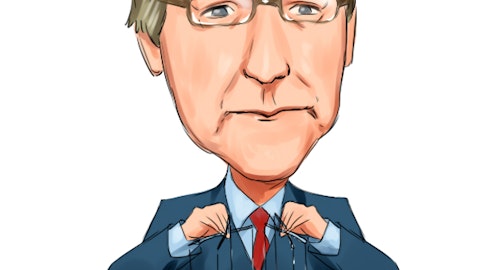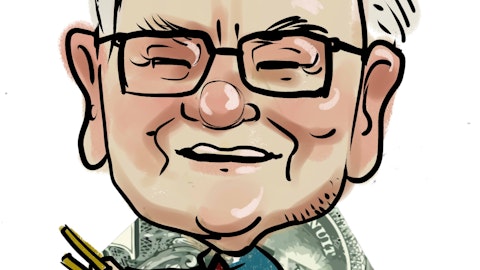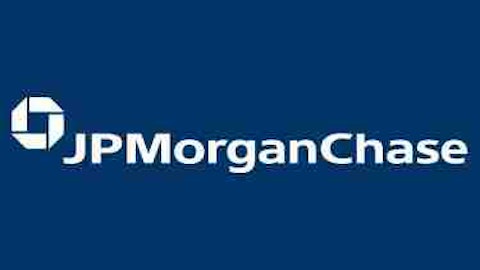On the 19th and 20th of July, JPMorgan Chase & Co. (NYSE:JPM) CEO Jamie Dimon purchased a total of 360,000 shares of the bank (read our coverage of Dimon’s buy and analysis of JPMorgan Chase at that time). It’s two and a half months later, and Dimon’s purchase is up 23% as JPMorgan Chase currently trades at a price above $42 compared to an average acquisition price of $34.14. This gain isn’t particularly surprising to us, as Dimon wouldn’t have put over $12 million into the stock of the same company that pays his salary unless he thought the upside was worth losing the benefits of diversification. Chalk one up for the statistical trend that insider purchases are bullish signs– even when the company is being pummeled by bad news as JPMorgan Chase & Co. was at the time due to the London Whale losses and subsequent concerns over risk management more generally.
Should Dimon be looking to sell now? The bank’s second quarter was not good, with revenue down 12% and earnings down 9% compared to a year ago. However, trading losses occurred in nearly half of the market days during the quarter- a London Whale effect- so the rate of decline is likely to moderate going forward. Even with the climb in the stock price, JPMorgan Chase still trades at a discount to its book value. On an earnings basis, the bank trades at 10 times trailing earnings and 8 times what Wall Street analysts expect it to earn next year. JPMorgan Chase & Co. also made our list of the most popular stocks among hedge funds for the second quarter (see the full list), with 78 funds and other notable investors in our database of 13F filings reporting a position in the bank.
As a combination of an investment and a retail/commercial bank, JPMorgan Chase can be compared to the even more troubled Citigroup Inc. (NYSE:C) and Bank of America Corp (NYSE:BAC) as well as to Barclays PLC (NYSE:BCS), which is also seeing bad publicity (due to its role in the LIBOR scandal) and to Wells Fargo & Company (NYSE:WFC). Bank of America and Citi trade at even greater discounts to book value than JPMorgan Chase does, with P/B multiples of 0.5 and 0.6 respectively. However, on an earnings basis they are actually about even with their arguably better-run peer: both banks trade at trailing P/E multiples of 10, Citi’s forward P/E is also even with JPMorgan Chase’s at 8, and Bank of America’s is actually a bit higher at 10. Add to this that the combined dividend yields of Citi and Bank of America are 0.5% versus JPMorgan Chase’s which approaches 3%, and it seems to us that they are worse buys.
There is a case to be made for Barclays as a stock which was hit by negative events, and could now recover: it trades at only 6 times forward earnings estimates and at half its book value, with a dividend yield of 1.8%. European exposure has not been good for Barclays, with revenue declining at a double-digit rate versus a year ago and nearly wiping out earnings. We expect financial troubles in that geography to continue, and so we would want to wait to see better results from the bank before taking advantage of any value. Wells Fargo, meanwhile trades at premiums to JPMorgan Chase across the board. It does seem to have a better brand in the minds of consumers and investors, but its P/B of 1.4 is quite a bit higher and its P/E multiples are slightly above those of Dimon’s bank as well. However, Wells Fargo actually showed an improvement in its revenue and earnings during the second quarter compared to the same period in 2011, and so it could be argued to earn this premium.
If we were Dimon’s financial advisor, we’d suggest that he take some profits but keep the majority of his most recent purchase in the stock for the time being. JPMorgan Chase still looks cheap, even when compared to Citigroup and Bank of America.






